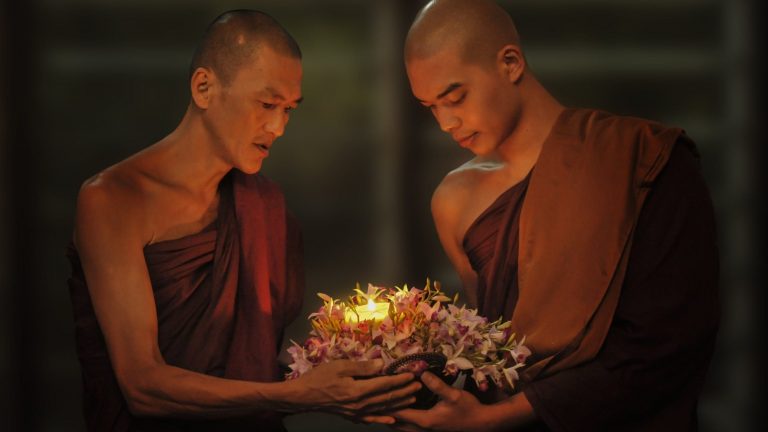
Buddhism is a religion which dates back to the 6th century B.C.E. It is one of the most important religions prevalent among Asian countries. It is currently the fourth largest world religion. At one time, it was recited in half of the civilized world, particularly in Asia all the way of the Indian subcontinent to Burma, Tibet, Thailand, China, Mongolia, South East Asia, Korea, and Japan. The founder of this religion was Siddhartha Gautama who was also known as the Buddha, or Enlightened One. Buddhism was basically preaching the life experiences of the Buddha, his teachings, and the “spirit” or “essence” of his teachings were (called dhamma or dharma) as models for the religious life.

Buddhism came from Buddha (Siddhartha Gautama) who was born into a wealthy family as a prince in present-day Nepal. He was moved by suffering in the world. He decided to give up his lifestyle and endure poverty. He began to teach others these truths out of compassion for suffering.
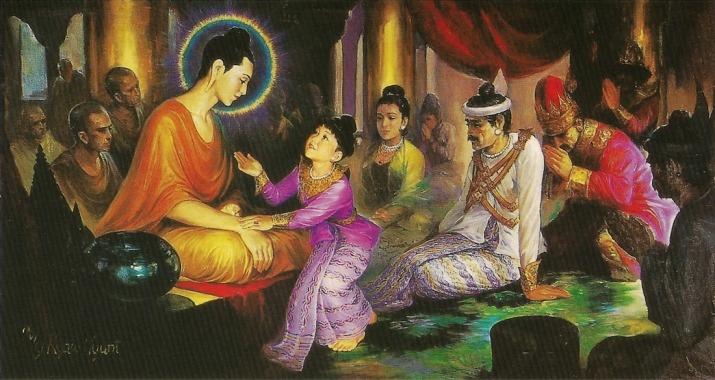
The most important doctrines he taught included the Four Noble Truths and the Eight-Fold Path. His primary Noble Truth is that life is suffering (dukkha). The other Noble Truth is that pain is caused by craving which is for sense pleasures and for things to be as they are not.
The Emergence of Buddhism

After the death of Gautama, his followers began to organize a religious movement to preach his teachings. His teachings became the foundation for the beginnings of Buddhism.
In the 3rd century B.C., Ashoka one of the Greatest, the Mauryan Indian emperor, made Buddhism the state religion of India. He and his son helped to preach Buddhism throughout South India and into Sri Lanka (Ceylon) (3rd century B.C.E.).Buddhist monasteries were made, and missionary work was organized.
Features of Buddhism
Buddhism is a set of principles and practices derived from the preaching of Gautama Buddha.
1. The three Jewels of Buddhism

It comprises the three main aspects of Buddhism namely The Buddha, The Dharma, and The Sangha. The main preaching is that “Buddham sharanam gacchami, Dharmam sharanam gacchami and Sangham sharanam gacchami.” It means, “I go forth taking refuge in the Buddha, the Dharma, and the Sangha.” They may also use it as an affirmation for spiritual cleansing to strengthen their resolve to attain Nirvana.
2. The Four Noble Truths
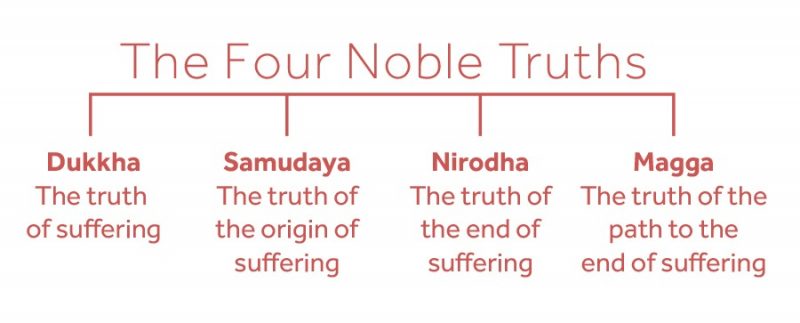
They are based upon his insightful observation and pure reasoning and can easily be validated or ascertained by anyone with discernment. The Four Noble Truths are as follows. First, life is full of suffering without exception. Second, desire is the root cause of suffering. Third, it is possible to end the suffering, and fourth, it can be done by right living on the Eight fold Path or the Middle Path.
3. Nirvana Preaching’s

Nirvana implies the extinguishment of all desires and attachments. It implies the end of individuality or the end of all formations and associations that go into the making of the being, following the dissolution of the mind.
4. It prescribes Right Living:

It prescribed eight sets of practices to end the suffering and attain peace and Nirvana. The eight practices which were prescribed are right view, right resolve, right conduct, right speech, right effort, right livelihood, right mindfulness, and right meditation. These are further subdivided into three sets. Right speech, right action, right livelihood lead to the development of moral virtue. Right view and right resolve lead to insightful wisdom.
5. Schools and Sects of Buddhism:
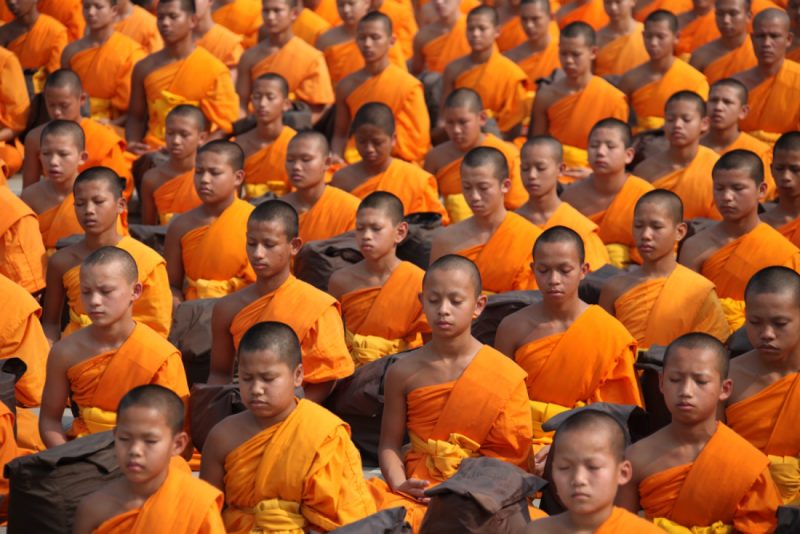 The two main sects, Hinayana and Mahayana. Another primary concept was the idea that in the advanced stages of advancement on the Eight Fold Path, monks could postpone their liberation out of compassion and become Bodhisattvas to help other beings attain salvation. The Mahayana school also focused upon the nature of the existence and the state of Nirvana. Vajrayana Buddhism and is also called as Tantrayana which was another important sect, which emerged around 5th Century AD in India.
The two main sects, Hinayana and Mahayana. Another primary concept was the idea that in the advanced stages of advancement on the Eight Fold Path, monks could postpone their liberation out of compassion and become Bodhisattvas to help other beings attain salvation. The Mahayana school also focused upon the nature of the existence and the state of Nirvana. Vajrayana Buddhism and is also called as Tantrayana which was another important sect, which emerged around 5th Century AD in India.
6. It Perfected the Art of Meditation
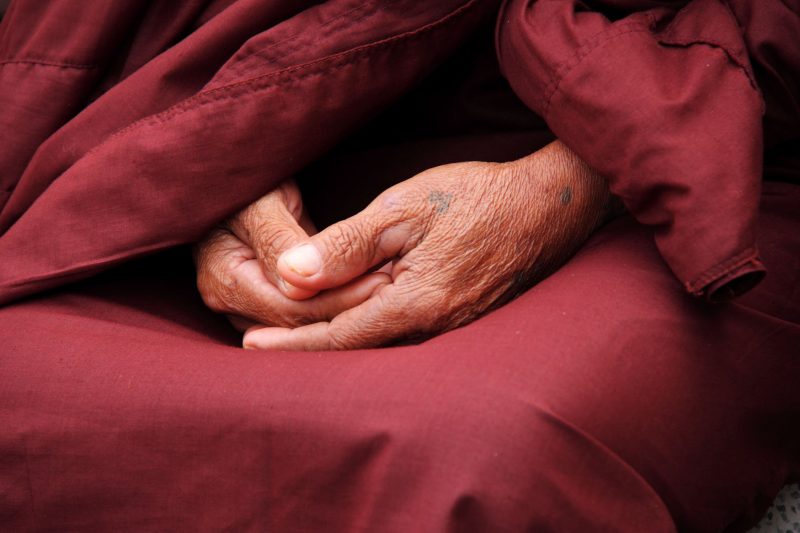 It perfected meditation techniques, visualization and mindfulness practices to cleanse their minds and bodies and attain higher states of consciousness (jhanas). The Buddhist meditations practices which are worth mentioning are Anapana Sati, Samata, Vipasana. Anapana Sati is breath meditation, similar to Hindu Pranayama, in which a monk sits in an isolated place or a quiet place and concentrates on the in breathing and out breathing with mindfulness. Samata is a relaxation-cum-mindfulness technique which is used in the initial stages to calm the mind and experience joy and tranquility.
It perfected meditation techniques, visualization and mindfulness practices to cleanse their minds and bodies and attain higher states of consciousness (jhanas). The Buddhist meditations practices which are worth mentioning are Anapana Sati, Samata, Vipasana. Anapana Sati is breath meditation, similar to Hindu Pranayama, in which a monk sits in an isolated place or a quiet place and concentrates on the in breathing and out breathing with mindfulness. Samata is a relaxation-cum-mindfulness technique which is used in the initial stages to calm the mind and experience joy and tranquility.
Teachings of Buddhism

The Teachings of Buddhism includes its Eight Fold Path also called as Eight Aspects of Life, all of which are to be integrated into everyday life. These paths are introduced to make the environment aware of the Buddhist path. The Eight Fold Path is as follows:
1. Right Understanding: This is a significant step on the path as it relates to seeing the world and everything in it as it really is, not as we believe it to be or want it to be. It is seeing the right view of everything.
2. Right Intent: This is the step where we become committed to the path. It presents us what life really is and what life’s problems are composed of, Right Intent urges us to decide what our heart wants. It must come from the heart and involves recognizing the equality of all life and compassion for all that life, beginning with yourself.
3. Right Speech: This step estimates the power of the spoken word, and often regret words said in haste. It involves recognition of the truth, and also an awareness of the impact of idle gossip and of repeating rumors. The correct use of speech helps to unite others and can heal dissention.
4. Right Action: It recognizes the need to take the ethical approach in life, to consider others and the world we live in.
5. Right Livelihood: Buddhism promotes the principle of equality of all living beings and respect for all life. It implies that a Buddhist who is able will undertake some work, either as part of a Buddhist community or in their workplace.
6. Right Effort: It means cultivating an enthusiasm, a positive attitude in a balanced way. In order to produce the Right Effort, one should have clear and honest thoughts and feelings of jealousy and anger should be left behind. Right Effort equates to the positive thinking, followed by focused action.
7. Right Mindfulness: It means being aware of the moment, and being focused in that moment. It asks us to be aware of the journey at that moment and to be clear and undistracted at that moment. Right, Mindfulness is very closely linked with the meditation and its various forms the basis of meditation.
8. Right Concentration: It is turning the mind to focus on an object, such as a flower, or a lit candle, or a concept such as loving compassion. It is significant as they teach the mind to see things, not as we are conditioned to seeing them, but as they really are. At the same instance, they also lead to a feeling of calm and peace within the world.
Buddhist Councils
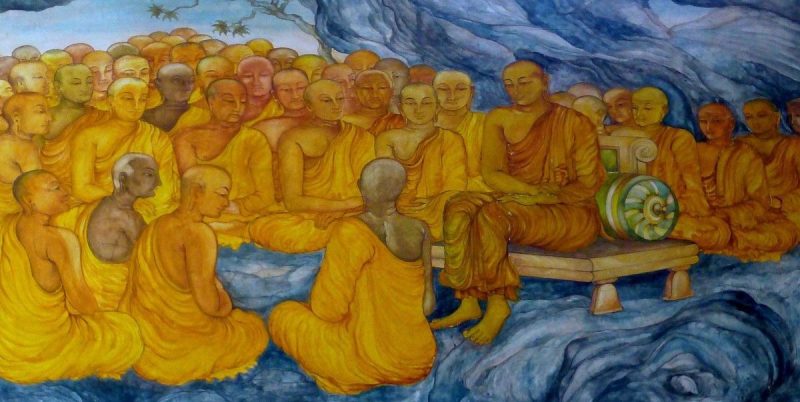
The description of the six Buddhist councils has been mentioned below:
Name Year Place King Purpose
1st Council 483 BC Sattapani cave at Rajgriha King Ajatshatru It was held with the purpose of preserving Buddha’s teachings (Sutta) and rules for disciples.
2nd Council 383 BCE Nepal King Kalasoka It was called to discuss monastic practices, in particular, whether monks could be allowed to handle money.
3rd Council 250 BC Pataliputra King Asoka This Council appeared to have met to compose commentaries on the Tipitika.
4th Council 72 AD Kundalvana, Kashmir Kushan King Kanishka This Council appeared when Buddhism was divided into two sects namely Mahayan and Hinayan.
5th Council 1871 Mandalay, Burma King Mindon During this council, 729 stone slabs were engraved with Buddhist teachings.
6th Council 1954 Burma at Kaba Aye, Yangoon Prime Minister U Nu It was held under the patronage of Burmese government . The council commemorated 2500 years of Buddhism.
Buddhist Literature
The prominent Buddhist literature includes Tripitaka or three baskets which further includes Jatakas, Mahavamsa, Bodhivamsa:
Tripitaka
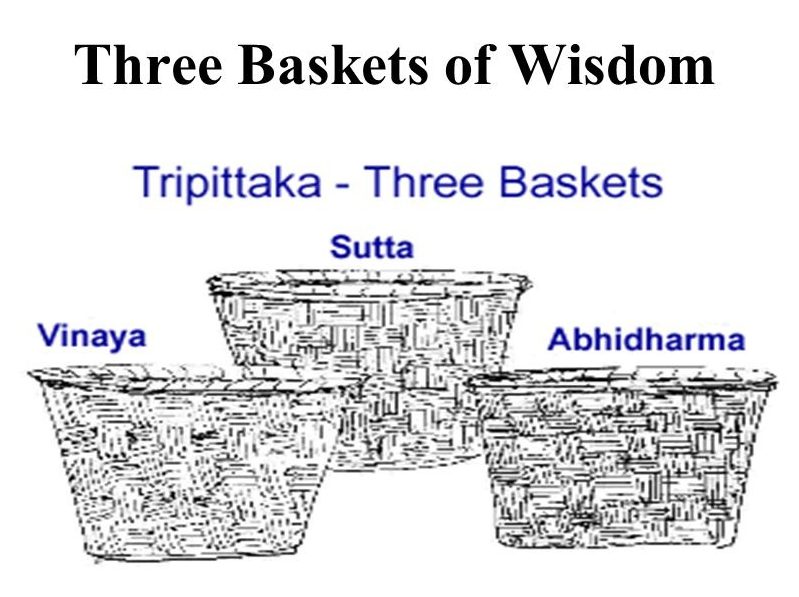
It is the earliest collection of Buddhist scriptures. These texts contain the strongest claim of being the words of the historical Buddha. The texts of the Tripitaka are organized into three major sections which are as follows:
1. Vinaya Pitaka:
It is the monastic rules for monks and nuns. It can also be called a Book of Discipline. It contains the rules of communal life for monks and nuns.
Its sections are:
1. Digha Nikaya: It Comprises of the “long” discourses in 34 long sutras.
2. Majjhima Nikaya: This Comprises of the “middle-length” discourses in 152 sutras.
3. Samyutta Nikaya: This Comprises of the “connected” discourses in over 2800 sutras.
4. Anguttara Nikaya: This Comprises of the “numerical” discourses in over 9600 sutras.
5. Khuddaka Nikaya: Comprises the “minor collection” It has around 15-17 booklets.
2. Sutra-Pitaka
It is a collection of sermons of the Buddha and senior disciples.
3. Abhidhamma Pitaka:
It deals with the philosophy and doctrine of Buddhism appearing in the Suttas. It contains interpretations and analyses of Buddhist concepts. It is believed that there are seven works of Abhidhamma Pitaka which are agreed to not represent the words of Buddha himself. The 7 books are below mentioned:
1. Dhammasangani: This contains a matrix which lists the classification of Dhammas or ideas.
2. Vibhanga :It has in it eighteen chapters dealing with different teachings of Buddhism. It has 3 volumes and the third volume is a in question-answer format.
3. Dhatukatha: It has a matrix and various topics.
4. Puggalapannatti: It has a matrix which deals with the list of the persons.
5. Kathavatt Hu: It contains the debates and commentary on those debates.
6. Yamak A : Yamaka has questions in pairs and understanding.
7. Patthana: It also contains questions and answers.
Jatakas

It contains the tales of previous births of Buddha in poems. There are 547 poems. In Sanskrit it is called Jatakamala, In Khmer they are known as cietak, and in Chinese, they are called Sadok.
These are moral tales, probably written down in this form in the 4th century, ie probably a 50 to 150 years after the life of Gautama Buddha.
Mahavamsa

Mahavamsa is one of the well known Buddhist literature which means “Great Chronicle”. It’s a historical poem in Pali Language which deals about the Kings of Sri Lanka. The initial version of Mahavamsa was from 3-4th century BC during the reign of King Vijaya. Mahavamsa, Dipavamsa, Culavamsa (small chronicle) all are sometimes known as Mahavamsa.
Bodhivamsa
It is a mix Sanskrit Pali text which was composed by Upatissa under the rule of Mahinda IV of Sri Lanka in 10th century AD. It explains the arrival of a branch of Bodhi tree in Sri Lanka and many other things which mentioned in Mahavamsa. It is a particular class of Buddhist literature that in many ways resembles conventional Western histories. The word vaṃsa implies “lineage,” or “family,” but when it is practiced to refer to a particular class of narratives it can be translated as “chronicle,” or “history.” These texts, which may be ecclesiastically oriented, dynastically oriented, or both at the identical time, usually either recite the lineage of a particular person, king, or family or represent in concrete articles the history of a particular article, region, place, or thing.
Buddhist Architecture
Three types of structures are associated with the religious architecture of early Buddhism: monasteries are
Viharas:
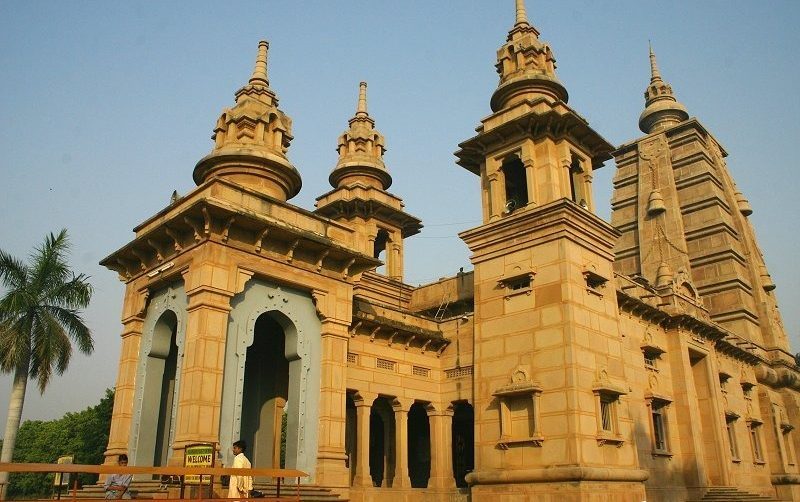
It is a type of Buddhist temple which usually has living quarters for monks or nuns. These were places to venerate relics.
Stupas
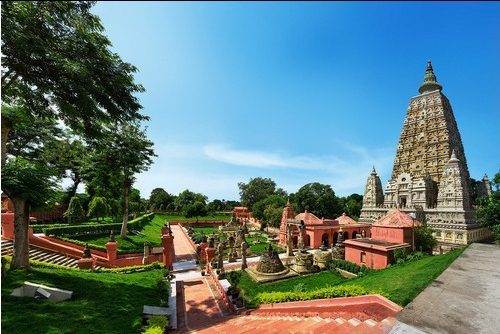
It refers to a mound-like structure that contains some relic of Buddha or Buddhist monks. The foundation of the Buddhist stupas was mainly laid by the Asoka. It is said that he has built over 84,000 stupas. The earliest and largest stupa is found in Sanchi which is ascribed to Asoka. The best examples of Buddhist stupas are located at Amaravati, Sanchi, Barhut, and Gaya.
There are three types of Stupas:
• Saririka Stupa: It is a great stupa was made at Bharhut, in the eastern part of present-day Madhya Pradesh (in Satna District). It is said that Bharhut stupa initially was built by Asoka and then, later on, it was improvised by the Sungas.
• Paribhogika Stupa: It is a site of three stupas out of which the first and the oldest Great Stupa was originally commissioned by Asoka.
• Uddeshika Stupa: It is located at Sarnath, 13 km away from Varanasi which marks the deer park or Rishipattana where Buddha gave his first sermon. As per an inscription dated 1026 AD, recovered from the site, its older name is Dharmachakra Stupa.
Chaityas
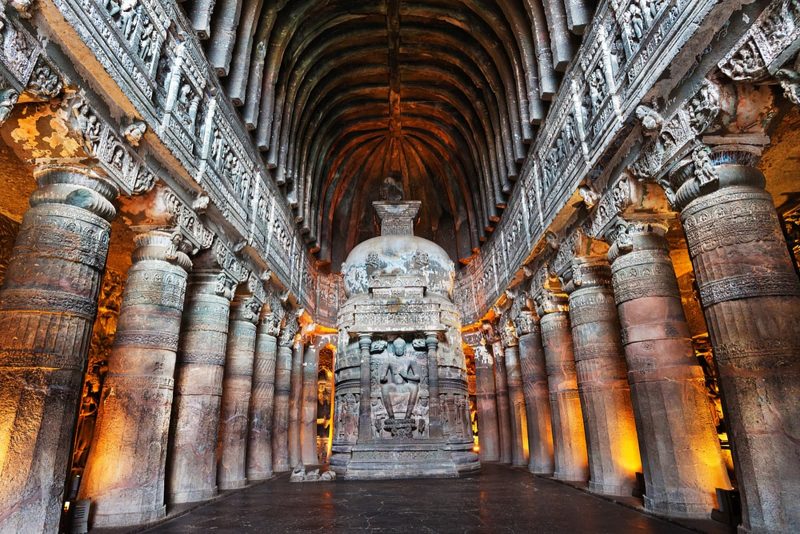
It is also called chaitya grihas, which later came to be known as temples in some places. It is a Buddhist shrine or prayer hall with a stupa at one end. In the modern texts which are on Indian architecture, the term chaitya-griha is utilized to denote an assembly hall that houses a stupa.
Famous Buddhist Temples are as follows:

1. Mahabodhi Temple, Bodh Gaya
2. Mahaparinirvana Temple, Kushinagar
3. Ramabhar Stupa Temple, Kushinagar
4. Wat Thai Temple, Kushinagar
5. Thikse Monastery, Leh
6. Mindrolling Monastery, Dehradun
7. Namdroling Monastery & Golden Temple, Mysore
8. Rumtek Monastery, Gangtok
9. Tsuglagkhang Temple Complex, Dharamsala
10. Dhamekh Stupa, Sarnath
11. Vishwa Shanti Stupa, Rajgir